10 futuristic concepts that can change our lives
 Bashny.Net
Bashny.Net
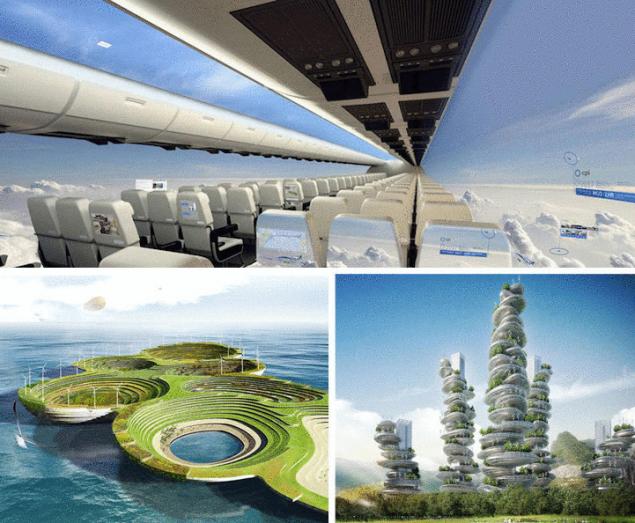
What will be our world in the future? Where we live, eat, sleep, work? If you ask the creators of these futuristic concepts, you will be surprised by their answers. According to the UN, 54% of inhabitants of our planet live in cities, and by 2050 this figure will rise to 66%. The urban population will increase by another 2.5 billion people will be added to the existing seven billion. It will be almost ten. Where are all these people going to live?
Before you ten conceptual projects that can make the world a better place. In the end, when it's such a problem, why not to think? Although many of these ideas will be implemented years, if not decades, now they give us the exciting opportunity to look into our collective future.
Building on the tides

Can you imagine a future home, living entirely at the expense of ocean waves? Designer and architect Margot Krasojevic presented "hydroelectric tidal house", a futuristic concept that uses the power of tidal waves to generate electricity. The building is covered with two membranes, external and internal. Exterior consists of concrete and contains solar panels that supply electricity to a residential area. The shell penetrated the hydraulic turbines, which generate electricity from tidal waves. Inner shell made from lightweight aluminium, rises and falls with the change of the tide. The outer shell gives it a sort of anchor. The outer shell is more flexible, responds to the movement of the pistons of hydraulic turbines. Tidal waves as energy source have not been studied in the context of self-sustaining homes. However, the architect believes that they can be more "effective", working in symbiosis with wind and solar energy.
Self-sufficient floating city
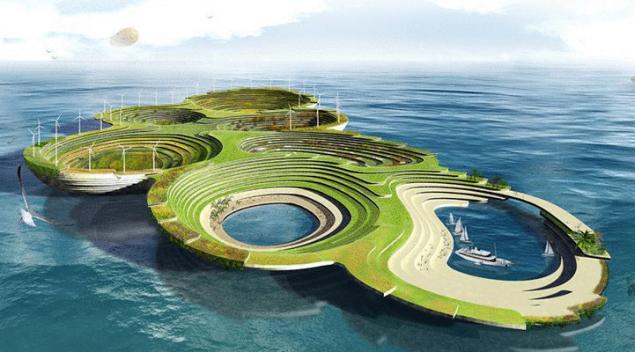
What to do if a natural disaster or a war would devastate the whole country? The Serbs Alexander Joksimovic and Jelena Nikolic believe that our salvation lies in self-sustaining cities floating on the water. The concept of "Noah's ark", which won the prize in the Skyscraper Competition 2012, can save all living species, from humans and animals to plants and trees. Flexible cables will connect the island with the ocean bottom, providing stability, and external wall height of 30 meters will be able to protect the island from winds and tsunamis. At the bottom of the island the giant turbines will turn the ocean flows into energy. As the residential area "the Ark" will be able to accommodate homes, offices, recreation areas, parks, forests and beaches.
The plane on the rails
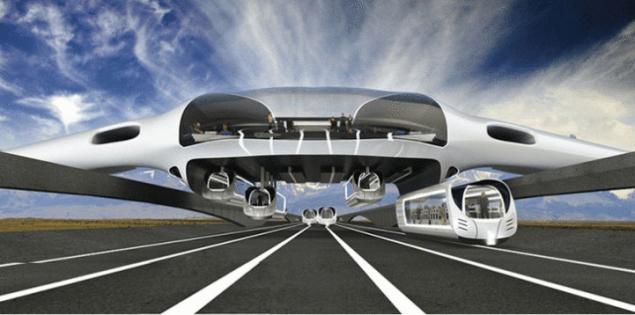
How might travel, if we could unite the railway with aerial vehicles? Horizon System from Studio Globe invent our transportation system again, demonstrating the possibility of a smooth and seamless transition from ground to air. At passenger stations SkyStation you can get on the bandwagon SkyLink. Then the passengers are carried away in this "pod" that attaches to the SkyShip. Remarkably, in these platforms will not only the passengers, baggage, and fuel for aircraft. It turns out the plane never have to land. But if he doesn't have to sit down, his wings can be optimized directly for the flight, which will significantly increase its effectiveness.
Ergonomics vertical towers
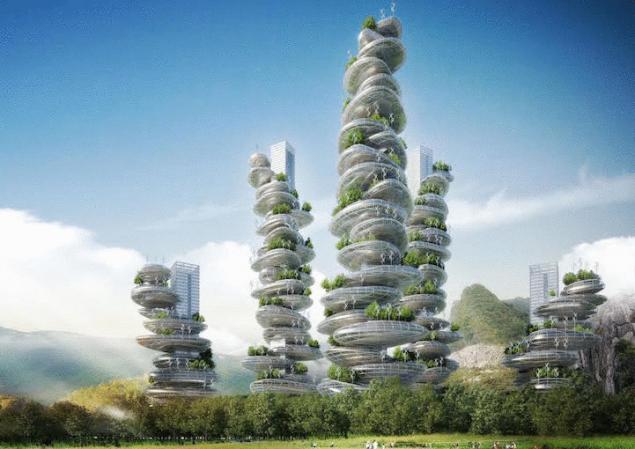
Belgian Vincent Callebau Architectures believes that the urban landscape of Shenzhen can be transformed, replacing the skyscrapers "Nefertari", vertical half-dead towers. Asian Cairns, "Asian carny" inspired by the natural Karami, a man-made pile of stones used as a pointer. Each "pebble" consists of different areas: homes, offices, concert halls and shops, gardens and farmland. This project can help not only the growing population of cities, but also to meet the growing consumption of energy, producing more energy than it consumes. This can be achieved through the turbines, solar cells and presence of vegetation. In General, this can be a new model of smart cities.
House of the sun
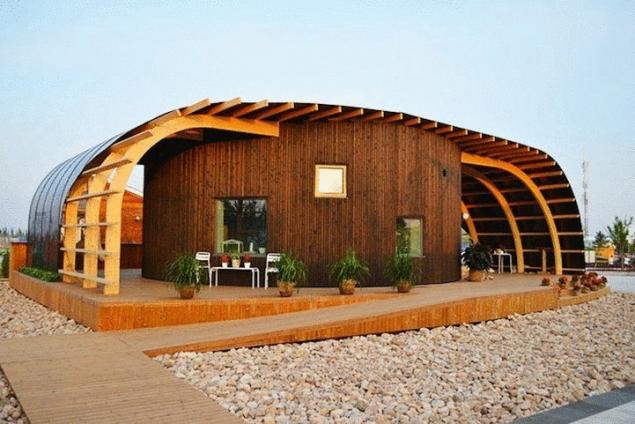
Although the houses running on solar electricity, is nothing new, to make them stable and modular is not so easy. Halo, developed by students of over 40 universities, grouped Team Sweden represents a stable concept of a residential building, fully operational from the sun. 95% of construction materials are composed of renewable wood. Halo includes more than 30 isolated modules that seamlessly attached to each other. The whole roof consists of solar panels that provide the house with energy.
Independent underwater city
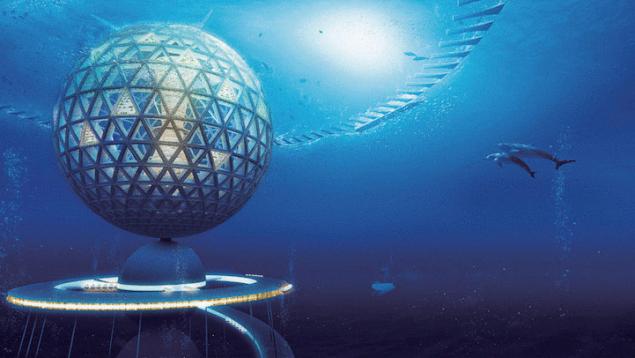
Ocean Spiral proposed by the Shimizu Corporation, is the project a $ 25 billion offering building a self-sufficient underwater city. The project aims to highlight the huge potential of the deep ocean, linking vertically the air, surface water, deep ocean and ocean floor. With Seating for 5,000 people, the concept consists of a massive glass dome Blue Garden is 500 meters in diameter, a giant spiral, which uses the energy of the earth and the deep Earth area Factory where to store carbon dioxide and will develop marine resources. The building should be designed to protect against natural disasters and temperature changes.
Ambulance provided assistance
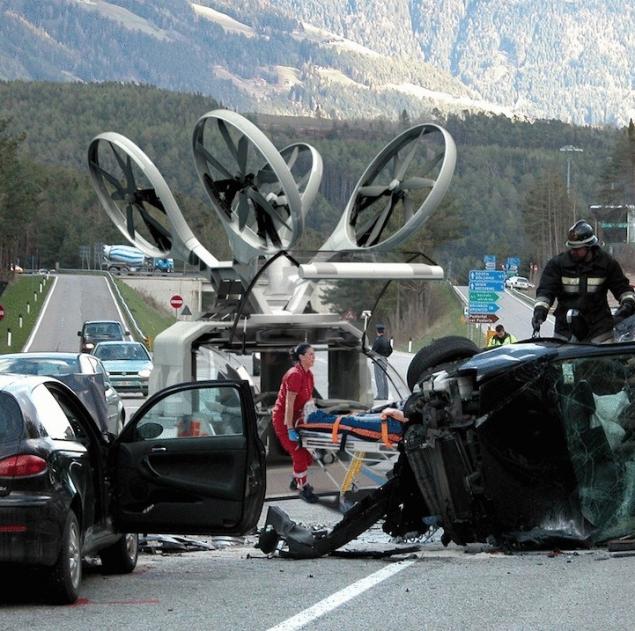
When Fast Company asked the question: "What in healthcare requires a radical redesign?", design Studio responded with the design of the ambulance with the participation of drones. In emergency situations, when seconds count, and the cities clogged with traffic, four wheeled ambulance may never reach the patient. The decision Argodesign — ambulance drone to one person who can land anywhere. It can carry one medic to the patient, which stabilizes it, put it on a drone and sent to the hospital for treatment. The most curious thing is that these flying ambulances may appear in the next few years. This product meets all the requirements of innovation: faster, cheaper, better.
3D-printed prostheses

For several years, 3D printing has already gone a long way. Industrial designer William Ruth confirms this view his Exo-Prosthetic, modern prosthesis that can be printed on a 3D printer. Although similar products have already invaded our world, the concept deserves attention and reflects the spirit of the time. To the traditional denture can sometimes be quite difficult and expensive. Ruth uses modern technology to streamline the production of prostheses. He uses a combination of 3D scanners, 3D printers and complex software for 3D modeling to create accurate, customizable, and affordable dentures. The final model is printed from titanium. It is not only cheaper and easier, but also aesthetically pleasing.
As he says to Ruth, "one of the most common complaints that you hear from the amputees view their new dentures. Traditional prostheses are robotic and mechanical form in nature. Using 3D printing, I attach more freedom form. The most important aesthetic aspect to merge with the physical form of the media. This allows you to create more natural and aesthetically pleasing dentures that are perfectly suited to the clothes and help the carrier to physically feel the shape of the lost limb".
High-speed transport systems in capsules
To jump into the high-speed capsule that will fly on a series of tubes for thousands of miles — sounds like a pipe dream, but this project is not so far from realization. Hyperloop was the idea of founder of Tesla Motors Elon musk a few years ago. Today, enterprising people took Hyperloop on bail and are preparing to build an experimental tube. High-speed transportation system includes the capsule under pressure, which fly on an air cushion in a continuous steel pipe. Such a system can overcome the 500-kilometer stretch of road in 35 minutes at speeds up to 1000 kilometers per hour. Two times slower than by plane. Capsules can accommodate six to eight people will be sent every 30 seconds and pay only $ 20 per ticket. The price of the project is 6.2 billion dollars. That's a lot, but comparable in price with high-speed Railways and highways.
The plane without Windows with panoramic views
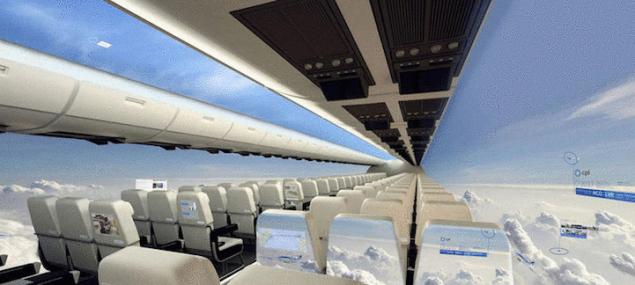
Imagine that flying a plane without any Windows. Windowless Fuselage is the concept of British innovation company Centre for Process Innovation (CPI), which wants to replace the Windows on commercial planes with high-resolution displays. These panels will show you the view around the aircraft, thanks to cameras placed on the outside of the aircraft, or act as lighting panels that change color depending on the time of day. Due to the elimination of material that is used to strengthen the Windows and decrease the use of fuel, and with it carbon dioxide emissions into the atmosphere. How soon such a project would be possible in reality?
"We expect that the flexible OLED displays of this size will be available in the next ten years — say in the CPI. — However, the design of commercial aviation is changing every 15-20 years, so, most likely, the concept will be implemented by 2035".published
P. S. And remember, just changing your mind — together we change the world! ©
Source: hi-news.ru
Tags
See also
10 simple tricks that can change your life
25 tiny tips that can completely change your life
7 questions that will forever change your life
As electronic passwords can change our life
Prayers that can change your life
Three solutions that will change your financial life
Books that can change your view of the world and man's place in it
7 attachments that can lead to disease
Anthony Robbins: How 10 days can change the quality of life
Training 1. Effects of destiny in our lives. Oleg Gadetsky

















